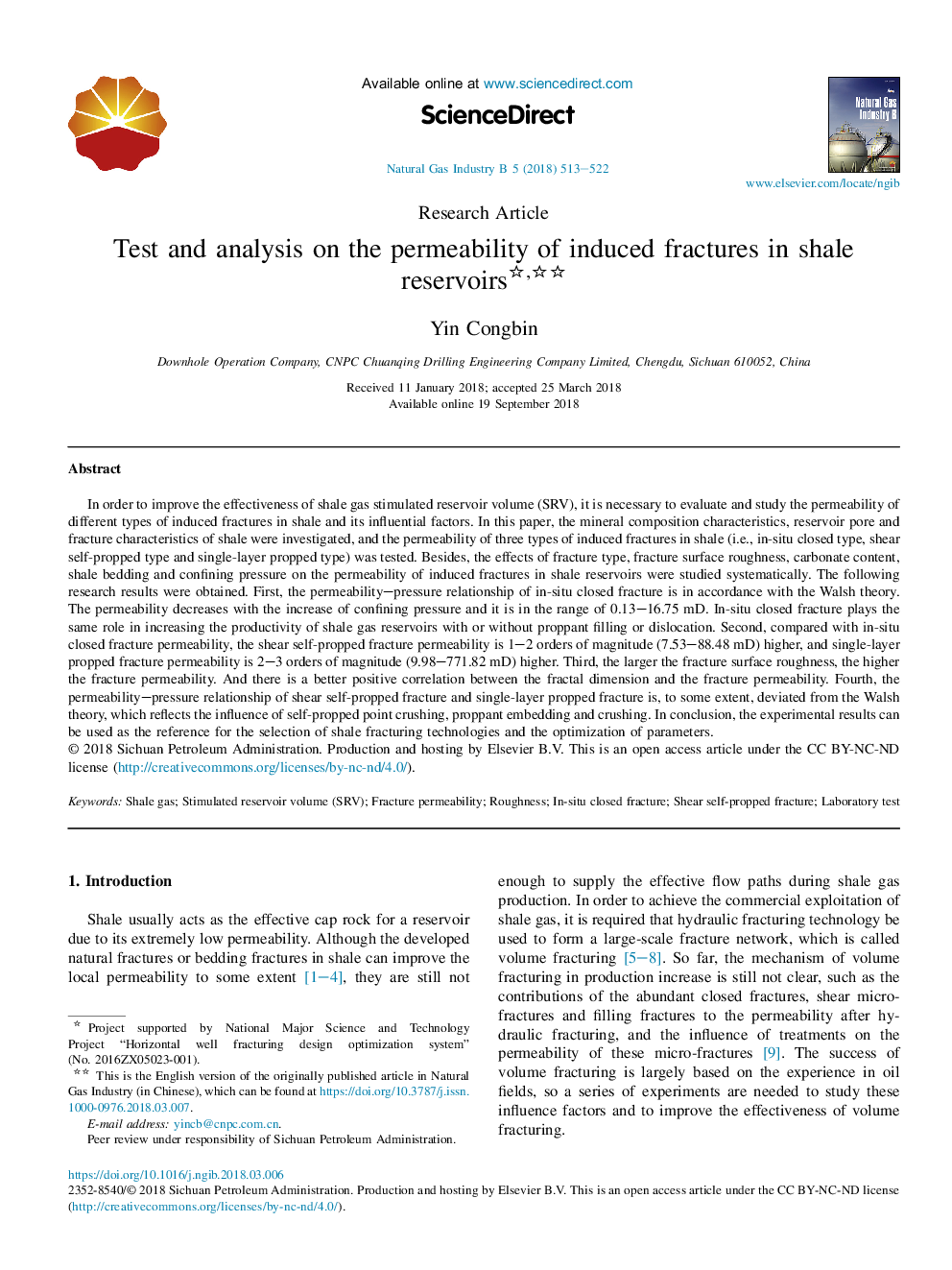| Article ID | Journal | Published Year | Pages | File Type |
|---|---|---|---|---|
| 11011049 | Natural Gas Industry B | 2018 | 10 Pages |
Abstract
In order to improve the effectiveness of shale gas stimulated reservoir volume (SRV), it is necessary to evaluate and study the permeability of different types of induced fractures in shale and its influential factors. In this paper, the mineral composition characteristics, reservoir pore and fracture characteristics of shale were investigated, and the permeability of three types of induced fractures in shale (i.e., in-situ closed type, shear self-propped type and single-layer propped type) was tested. Besides, the effects of fracture type, fracture surface roughness, carbonate content, shale bedding and confining pressure on the permeability of induced fractures in shale reservoirs were studied systematically. The following research results were obtained. First, the permeability-pressure relationship of in-situ closed fracture is in accordance with the Walsh theory. The permeability decreases with the increase of confining pressure and it is in the range of 0.13-16.75Â mD. In-situ closed fracture plays the same role in increasing the productivity of shale gas reservoirs with or without proppant filling or dislocation. Second, compared with in-situ closed fracture permeability, the shear self-propped fracture permeability is 1-2 orders of magnitude (7.53-88.48Â mD) higher, and single-layer propped fracture permeability is 2-3 orders of magnitude (9.98-771.82Â mD) higher. Third, the larger the fracture surface roughness, the higher the fracture permeability. And there is a better positive correlation between the fractal dimension and the fracture permeability. Fourth, the permeability-pressure relationship of shear self-propped fracture and single-layer propped fracture is, to some extent, deviated from the Walsh theory, which reflects the influence of self-propped point crushing, proppant embedding and crushing. In conclusion, the experimental results can be used as the reference for the selection of shale fracturing technologies and the optimization of parameters.
Related Topics
Physical Sciences and Engineering
Energy
Energy Engineering and Power Technology
Authors
Congbin Yin,
